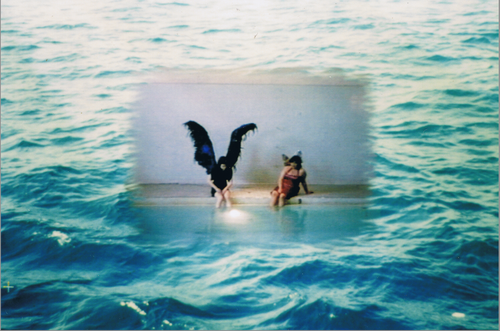
An Interview with Filmmaker Nina Menkes
Avant-garde filmmaker Nina Menkes’s works are as mysterious as they are powerful, surreal portraits of disconnected lives, uniquely composed of dream-like stills, gritty flashes of trauma and fury.
Since her 1981 debut A Soft Warrior, Menkes has created eight films (six features). Menkes writes, shoots, edits, directs and produces her work, frequently in collaboration with her sister, Tinka Menkes, who has appeared as the protagonist in most of her films, including Queen of Diamonds (1991) and The Bloody Child (1996). Menkes’ films have toured the world, receiving rave reviews and many honors, including a Los Angeles Film Critics Association Award, a Guggenheim Fellowship, two Fellowships from the National Endowment for the Arts, an Annenberg Foundation Independent Media Grant, an American Film Institute Independent Filmmaker Award, and two Fulbright Research Awards.
Menkes’ current projects include Heatstroke, a “thriller slash psychological quest film,” that takes place in Cairo, Egypt, and Los Angeles. Menkes described the script as prophetic, “interior and surreal,” eerily mirroring the civil unrest which had, at the time of this interview, recently erupted in Cairo, where the US Embassy was attacked in a protest over an anti-Islamic film. She is also working on a film set in Jerusalem called MINOTAUR, based on the Greek Myth.
This interview took place over email and via Skype, where Menkes was sitting in a less than reputable hotel in Jordan, surrounded by what sounded like frantic street traffic.
—Mariko Tamaki
I. WORLDS OF THE IMAGINATION
THE BELIEVER: Okay, I’m just gonna let her rip.
NINA MENKES: Sure.
BLVR: While you’re sitting in a hotel in Jordan.
NM: Yeah, I’m in a divey hotel. So.
BLVR: What makes it a divey hotel?
NM: I think it’s two stars. But I’m moving tomorrow to five stars because I can’t take it. I tried to save money, but I realized those days are over for me, the twenty-five year old backpacking days.
BLVR: Do you think someone meeting you as a little girl would picture you as a future experimental filmmaker?
NM: I don’t know about experimental, but probably a filmmaker. I was always putting on plays. I had this witch school, and I was creating worlds of the imagination and acting them out, so it kind of makes sense that I became a film director.
BLVR: What kinds of games did you play as a kid? Were you one of those kids who made movies when you were little? Were you an amateur spy?
NM: It’s funny that you mention “amateur spy,” because I loved Harriet the Spy, and as I recall I did try to be like Harriet for a certain period of my young life: notebook and spying...
You have reached your article limit
Sign up for a digital subscription and continue reading all new issues, plus our entire archives, for just $1.50/month.
Already a subscriber? Sign in




